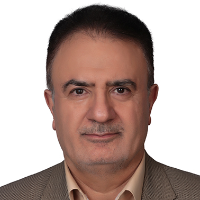Mathematical Modeling of Strong Ground Velocity Pulses using Spectral Decomposition and Forward Directivity Effects
The nature of near-field earthquake records is very complicated and uncertain. Due to this complexity, the prediction of the real structural responses has become very difficult. Based on the analysis of the physical characteristics of near-field records, it is possible to use the simplified mathematical models. Near-field ground motions which are often associated with a progressive directional phenomenon due to their particular type of the causative fault, have much more destructive effects on the structures than the other quake tremors. The related research results show that under the influence of a strong near-field ground motion which contains forward directivity effects, the structural responses would be entered to a great nonlinear domain. On the other hand, due to the limited number of available near-field records, it is needed to prepare artificial acclerograms which can simulate the characteristics of the strong ground motions. Thus, it is possible to achieve a vast data base corresponding to wide range of powerful ground motions using mathematical wavelets. As a result, it provides a general overview of these types of artificial quake tremors and prepares an extended knowledge on the performance of structures in confronting these destructive movements.
The results obtained from the seismological studies on strong near-field records indicate that the most of these tremors contain large amounts of kinetic energy corresponding to the content of low frequency band. Additionally, by ignoring the high-frequency band the coherent velocity pulses can be detected with acceptable accuracy. In order to separate the high and low frequency bands, the empirical mode decomposition (EMD) method is used based on programming in MATLAB software. Various methods have been proposed for simulation of near-field records which most of them is based on using harmonic functions and the spectral assessment of the low frequency band of earthquake records. In this regards, one of the best closed form evaluation has been performed by Mavroeidis and Papageorgiou (2003) which is to be formulated by making parametric changes to the so-called Gabor wavelet and replacing a simpler function instead of the Gaussian curve with a more efficient algebraic statement. Ghodrati Amiri et al. (2012) proposed another efficient formulation matched either of the benefits of Mavroeidis’s and Gabor wavelets. Both of the aforementioned models are based on the preparing of an efficient multi-statement parametric configuration of harmonic wavelets as noted above. In this study, in addition to calibrate the desired closed-formulations on the velocity pulses of the selected strong records, the accuracy of the notified simulation has also been investigated from the spectral and energy point of views.
The band of high frequencies corresponding to the spectral content of strong near-field records can be ignored appropriately. This is because the major amount of the related kinetic energy is usually transmitted in the form of a low frequency pulse along with a number of high frequency spikes. Generally, these features are displayed over a relatively short time domain. In this study, the analytical attention to this subject is concentrated on the simulation of coherent multiple pulses via EMD method. The purpose of such simulation is to create a wide range of powerful and high-energy artificial motions. Moreover, due to the limited availability of natural near-field earthquake records, the proposed pulses can be used to evaluate the structural seismic performance.
Generally, strong near-field records contain a few consecutive pulses with different periods and spectral configurations. The essential effects of these pulses must not be ignored in conducting of nonlinear dynamic time history analyses. Obviously, the effects of these type of earthquake records on the seismic response of mid-to-high rise structures (with a large periodic range) will be significant. Furthermore, the probable occurrence of the resonant mode, may cause destructive effects on the seismic response of structural skeletons. The proposed pulses in this study were formulated through the EMD method as well as performing an analytical calibration process related to both bands of high and low frequencies. The spectral evaluations of the fitted mathematical closed-form pulses were accomplished for the selected earthquake records. The obtained results indicate a good analytical convergence and correlation with the physical parameters of the natural ground motions.
- حق عضویت دریافتی صرف حمایت از نشریات عضو و نگهداری، تکمیل و توسعه مگیران میشود.
- پرداخت حق اشتراک و دانلود مقالات اجازه بازنشر آن در سایر رسانههای چاپی و دیجیتال را به کاربر نمیدهد.


